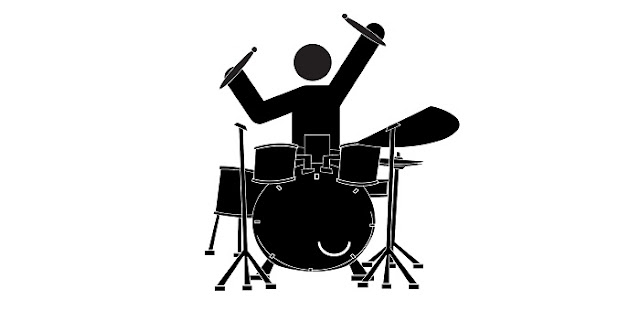 |
| Image by Pixabay |
We all know that drum is one of the most energy-consuming instruments to play, with large arm and hand movements making up most of your technique, but many people don’t realise that drumming can actually help improve your health if used as part of a regular exercise regimen. Many people who are new to drumming will quickly feel tired with all of the work involved, but seasoned drummers know that keeping fit is key to boosting your stamina to keep going.
Drummers, more than any other musician need to keep healthy and exercise as part of their playing to minimise the risks of causing injury whilst playing. Many drummers suffer from the same kind of injuries such as wrist, elbow, and shoulder injuries that could not only ruin your day, but also your playing ability.
 |
| Image by 123RF |
At Drummers Paradise customers often share many thoughts such as this kind of injuries, and we always encourage them to stay fit and keep drumming to avoid any major injury. But truly we thought we are obliged to share these important message to everyone involved in drumming, so bear with us with an open mind and courage.
Fitness is the Key for Your Technique
Drummers fitness and musicians fitness isn’t really talked about as a problem or an issue within the musicians circles, but it is a key aspect in any instrument playing that to stay fit and healthy will only benefit your playing in terms of having the perfect posture for playing, as well as having the perfect technique to give you stamina throughout playing.
Warm Up and Take Some Preparations
Warming up and staying supple in your arms is key to improve your drumming stamina, and with a few simple exercises you can stay in shape and improve your stamina for longer periods of drumming time. Not warming up or not staying in shape can result in injuries, which can be avoided if you follow a few simple warm up exercise tips before you start playing.
 |
| Image by 123RF |
One of the best ways to warm up is to move your arms and wrists in their full range of motion for few minutes to allow your muscles to warm up and be prepared for extended use whilst drumming. Standing toe touches are a great way to stretch the muscles in your arms, as well as keeping your back supple and ready to play.
Holding your drum sticks in your hands and turning your wrists also play an important role in making sure that your wrist muscles and hand tendons are nicely relaxed and aren’t too stiff before playing. If you feel any sharp pain then you should call it a day for now, and stop playing your drums if you continue to feel pain in your shoulder, elbows, wrists, and fingers.
Don’t Forget Your Lower Body!
It is also important to stretch your calf muscles in your lower legs if you are going to be using the bass drum and high-hats for extended periods of time. It is easy for a drummer to start playing from cold and get cramp in the lower leg muscles – something that can be avoided with a little warm-up!
 |
| Image by 123RF |
Drumming itself can be a great tool for exercise on its own due to the muscles involved and the length of time in which you drum. Using your large muscles in their full range of movement is the best way to burn calories and work your heart and lungs for great cardio-vascular exercise. Your upper body uses more energy than your lower body, and so with a well-positioned back and posture, you could be doing great work for your body when drumming on a regular basis.
Don’t Push Yourself, Know Your Limits!
Drummers often push themselves when it comes to stamina, and whilst pushing the limit on how long you can comfortably play for has an argument that stamina is built using ever lengthy stretches of time playing, it is important to know when to stop. Over-doing it and playing for extended periods of time will only increase the damage you may be doing to your ligaments, tendons and muscles. So if you feel any twitches, cramps or pain, just pause playing and take some time before you make the situation worse.
Warm up gently and slowly work into your regular playing rhythm. Use the full motion of movement of your muscles when warming up and ensure that you are sat in a comfortable and upright position to give you the best purchase on your kit, as well as ensuring that you aren’t going to feel tired sooner. Take breaks every now and again to get a rest, and ensure that your playing technique isn’t hindered by pain or cramps that regular exercise will be able to eliminate over time to become a fit drummer, ready for anything!

No comments:
Post a Comment